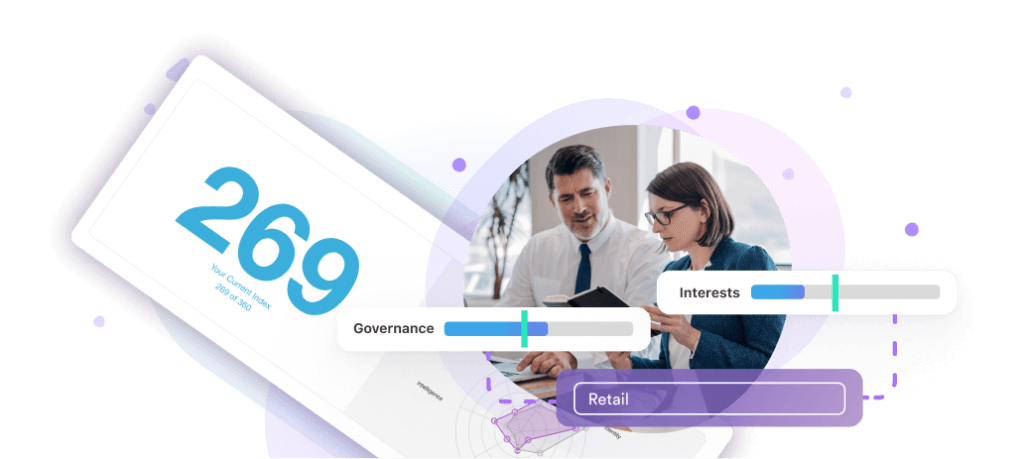Transforming Advertising: Lytics + Google Protected Audience API
November 6, 2023
In recent years, the advertising landscape has been dominated by discussions about the impact of third-party cookies and the growing awareness of consumers’ rights regarding online tracking. Advertisers and ad sellers have scrambled to find solutions, ranging from improved fingerprinting to server-side tracking, while grappling with a fundamental question: “How can we track consumers like we used to?” However, we at Lytics believe it’s time to shift the focus from tracking to understanding. This is something that Lytics has been doing for over a decade as the original CDP and as the undisputed leader of innovation across the Customer Data Platform (CDP) sector.
Redefining the Approach
The real answer to the challenges posed by the evolving digital landscape lies not in tracking users relentlessly but in comprehending their needs and preferences. Despite a decade of groundbreaking innovations in the Marketing Technology (Martech) and CDP space, customers and prospects have yet to fully embrace the idea that behavioral signals are exponentially more effective and less invasive than traditional methods.
Lytics offers a unique solution called Interest Engines that generates a rich taxonomy based on your content and products, associating these topics with user behaviors across various channels. You gain a profound understanding of what interests your customers with minimal effort. What’s more, Lytics continually updates and delivers these affinity attributes in real-time as customers engage, ensuring that your insights remain relevant.
From Insights to Action
Interest and behavior-driven attributes are indispensable to a comprehensive and portable Customer C360 strategy. They hold such significance that they constitute over 25% of the data points assessed in Lytics’ Customer 360 Readiness Index—a valuable tool available for free. This tool allows you to assess the state of your Customer 360 strategy and benchmark it against relevant industry standards.

The challenge of translating insights into actionable strategies has long plagued brands as they grapple with bridging the divide between AI-driven innovation and conventional methods. Even after a decade of progress, the intricate process of harmonizing advanced AI-driven thinking with traditional approaches is only beginning to be untangled.
However, amidst these challenges, a significant opportunity is on the horizon, particularly concerning upper-funnel advertising use cases. Historically, marketers have been forced to share consumers’ interactions and information with various ad networks to guide their targeting strategies. Yet, in light of mounting privacy concerns and the decline of third-party cookies, this approach is no longer tenable.
An Intelligent Solution
Instead of tirelessly tracking consumers, a practice becoming increasingly unpopular, Lytics and Google propose a smarter approach. This approach focuses on creating a rich, accessible resource containing only the user insights necessary to deliver hyper-relevant experiences across the digital advertising ecosystem.
By combining Lytics’ Interest Engines with Google’s Protected Audience API (formerly known as FLEDGE), brands can access a wealth of consumer behaviors derived from actual interactions. This data is tailored to the topics or products relevant to your brand without the need to track extraneous information or expose precious first-party data to external sources.
Understanding the Protected Audience API
The Protected Audience API is a Privacy Sandbox technology designed for remarketing and custom audience use cases, preventing third parties from tracking user browsing behavior across different websites. The Protected Audience API enables on-device auctions within browsers to select relevant ads based on the user’s previous website visits. This innovative technology is an experiment within Chromium, part of the TURTLEDOVE family of proposals.
The Protected Audience API relies on interest groups to enable sites to display ads that are relevant to their users. When a user visits a site, an interest group owner (e.g., a brand interested in marketing) can request the user’s browser to add them to the relevant interest group. The browser then records essential information such as the group’s name, owner, and configuration data.
When the user visits a site with available ad space, the ad space seller can use the Protected Audience API to run an ad auction and select the most suitable ads for display. This ensures ads are relevant to a user’s interests.
Why the Protected Audience API Matters
Traditionally, ad platforms relied on tracking user behavior across sites to understand their interests. Furthermore, the definition and curation of “interests” were managed in a black box and left little control over the actual brands or consumers.
With the Protected Audience API, browsers hold this information, reducing the need for cross-site tracking and giving users more control over their data. It represents a significant step toward a more privacy-conscious web platform.
Lytics’ Role in Simplifying the Process
Creating and managing interest groups may seem complex, but Lytics streamlines the process for our customers. Connecting your website, e-commerce platform, or any consumer touchpoint lets you easily establish a rich taxonomy and associate it with individual consumer profiles. Then, with a simple update to your preferred tag manager, Lytics seamlessly synchronizes these affinity attributes using Lytics’ Personalization Engine as interest groups in real-time. Please refer to our comprehensive documentation for a more detailed example of how straightforward this can be.
Furthermore, instead of relying solely on a single channel’s engagements to determine interests, you can leverage your complete cross-channel, first-party Customer 360 profiles and strategy to ensure that interests are based on a comprehensive view of engagements.
Everybody Wins
This pioneering approach benefits brands, consumers, publishers, and the broader ad tech industry. By harnessing a consolidated repository of exact behavioral attributes, brands can deliver more captivating experiences. Simultaneously, ad publishers can utilize behavioral patterns across their owned properties to present relevant interest groups to their customers. All without the need to track users in the traditional sense.
This collaboration between Lytics and Google signifies a substantial advancement in the continually evolving landscape of digital advertising, paving the way for a future where relevance and user privacy harmoniously coexist.


